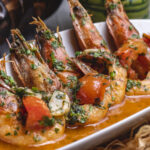Living with a milk allergy can present unique challenges, particularly when it comes to dining out and traveling. Milk and milk products are common ingredients in many dishes, making it essential for those with a milk allergy to take extra precautions to ensure their safety and well-being. However, with careful planning and awareness, it is possible to navigate these situations successfully. In this article, we will provide you with some useful tips to help you manage your milk allergy while dining out and traveling.
- Educate Yourself: Understanding which foods and ingredients contain milk is the first step in managing your milk allergy. Be aware that milk can be present in various forms, such as milk powder, cream, butter, cheese, and yogurt. Familiarize yourself with alternative names for milk, such as casein, whey, and lactose, as these may also trigger an allergic reaction.
- Communicate Clearly: When dining out, it is crucial to communicate your allergy clearly to the waitstaff and the chef. Speak directly to them about your specific dietary requirements and the severity of your allergy. Don’t hesitate to ask questions about the ingredients used in a particular dish, as some sauces, dressings, or even seemingly milk-free foods may contain hidden sources of milk.
- Plan Ahead: Before visiting a restaurant, check their menu online if available. This will give you an idea of the dishes they offer and allow you to identify potential milk-containing items. It is also helpful to call ahead and inquire about their allergy policies and whether they can accommodate your needs. Some establishments are well-versed in handling food allergies and may be able to provide alternative options or modify dishes to make them safe for you.
- Carry Allergy Cards: Consider carrying allergy cards that clearly state your milk allergy and any other food allergies you may have. These cards can be presented to the waitstaff or chef, serving as a visual aid and providing a concise explanation of your dietary restrictions. Allergy cards are particularly useful when traveling to foreign countries where language barriers may exist.
- Choose Safe Cuisines: Certain cuisines tend to use milk and dairy products more extensively than others. For example, Italian and French cuisines often include cheese, cream sauces, and butter, which may pose challenges for individuals with a milk allergy. Opting for cuisines like Asian, Mexican, or Mediterranean can provide you with a wider range of milk-free options to choose from.
- Bring Your Own Snacks: When traveling, it’s a good idea to carry safe snacks with you, especially if you are unsure about the availability of suitable options at your destination. Pack non-perishable items like granola bars, fruit, or nut butter packets that can provide you with a quick and safe source of nutrition in case of limited options or unexpected delays.
- Research Local Grocery Stores: If you have access to a kitchen while traveling, finding local grocery stores that offer dairy-free alternatives can be immensely helpful. Stock up on essentials like plant-based milk, dairy-free spreads, and other substitute products that you regularly use. This way, you can prepare your meals and snacks with peace of mind.
- Use Allergy Apps and Websites: Utilize technology to your advantage by using allergy-specific apps and websites that can help you find allergen-friendly restaurants in your area or during your travels. These platforms often provide user reviews and detailed information about the restaurant’s allergy policies and offerings.
- Be Prepared for Emergencies: Accidents can happen, even with the best planning. Always carry your prescribed epinephrine auto-injector (such as an EpiPen) in case of a severe allergic reaction. Make sure your travel companions and those around you are aware of your allergy and know how to administer the auto-injector if needed.
- Enjoy Dairy-Free Cuisine: Living with a milk allergy doesn’t mean you have to miss out on delicious food. Embrace dairy-free alternatives and explore new recipes that cater to your dietary needs. There is a wide array of plant-based milks, cheeses, and desserts available that can help you enjoy flavorful meals while accommodating your allergy.
Living with a milk allergy requires diligence and proactive planning, especially when dining out or traveling. By educating yourself, effectively communicating your needs, and being prepared, you can navigate these situations with confidence. Remember to prioritize your health and safety, and don’t be afraid to advocate for yourself to ensure a positive dining and travel experience.








